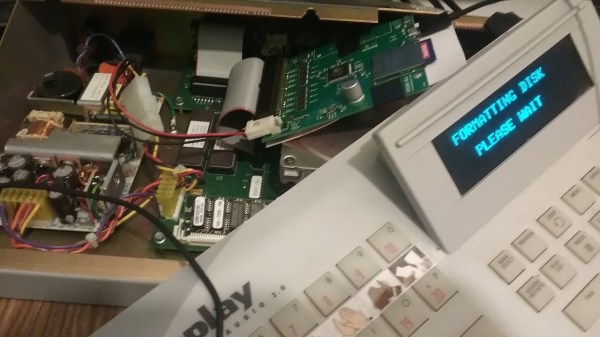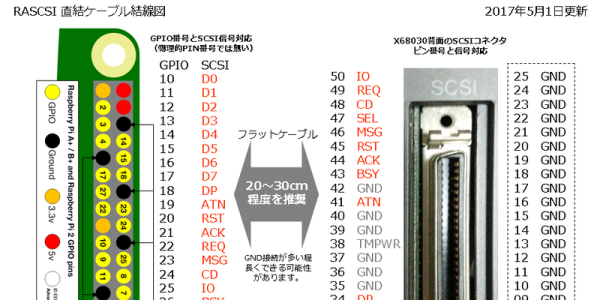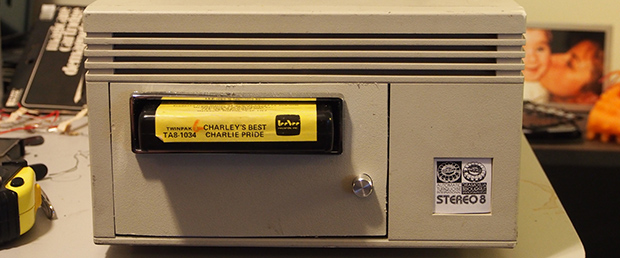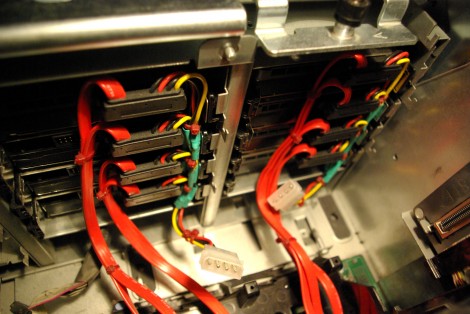Sometimes a mix of old and new is better than either the old or new alone. That’s what [Brad Carter] learned when he was given an old 1990s sound board with a noisy SCSI drive in it. In case you don’t know what a sound board is, think of a bunch of buttons laid out in front of you, each of which plays a different sound effect. It’s one way that radio DJ’s and podcasters intersperse their patter with doorbells and car crash sounds.
Before getting the sound board, [Brad] used a modern touchscreen table but it wasn’t responsive enough to get a machine gun like repetition of the sound effect when pressing an icon in rapid succession. On the other hand, his 1990s sound board had very responsive physical buttons but the SCSI hard drive was too noisy. He needed the responsiveness of the 1990s physical buttons but the silence of modern solid state storage.
And so he replaced the sound board’s SCSI drive with an SD card using a SCSI2SD adaptor. Of course, there was configuration and formatting involved along with a little trial and error to get the virtual drive sizes right. To save anyone else the same difficulties, he details all his efforts on his webpage. And in the video below you can see and hear that the end result is an amazing difference. Pressing the physical buttons gives instant sound and in machine gun fashion when pressed in rapid succession, all with the silence of an SD card.
A SCSI2SD card is a nice off-the-shelf solution but if you want something a little more custom then there’s a Raspberry Pi SCSI emulator and one which uses a Teensy with a NCR5380 SCSI interface chip.
Continue reading “Making A Vintage 1990s Sound Board Do Rapid Fire Silently”
















